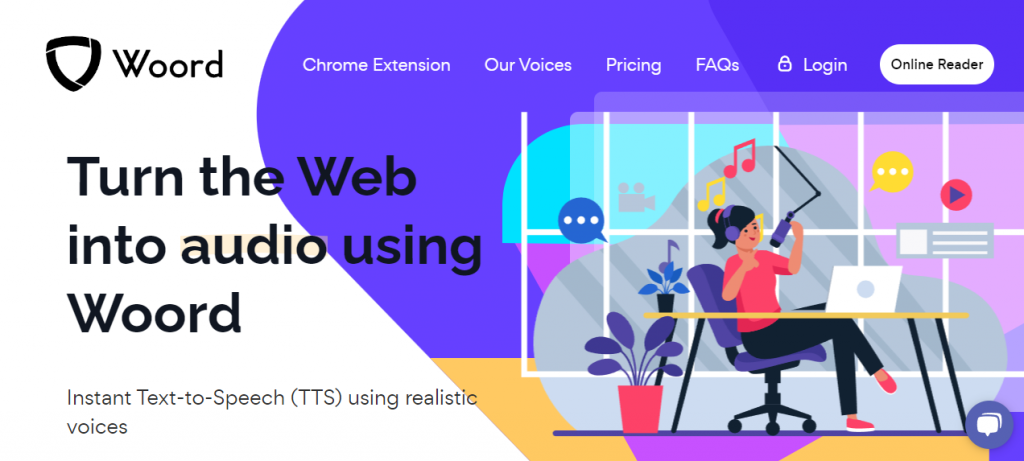Text-to-speech (TTS) technology is becoming an increasingly important tool for content creators across all platforms. Why? It lets you transform your digital publications by making them more accessible to everyone.
Whether creating written content, videos, or multimedia presentations, TTS technology can provide a number of benefits. By converting text into speech, TTS technology can enhance the accessibility of content for individuals with visual or reading impairments, expand the reach of content to a wider audience, and provide a more engaging user experience.
Additionally, TTS technology can save time and resources by automating the creation of audio content, reducing the need for voice actors or time-consuming manual recordings. This is why you need a Text to Speech API, and our recommendation is Woord.
Making Content Available to a Wider Audience
Text-to-speech helps content creators repurpose their content and make it more accessible. For example, writers can use realistic text-to-speech tools to turn their thoughts into audio stories or podcasts. All of this can help them get new audiences. Text-to-speech can also make the writing and editing process much easier by allowing the writer to hear their words read aloud without having to use their voice.
Voice Selection
As a creator, you may not be too comfortable sharing your voice. So, to overcome this, you can use a text-to-speech tool. With this technology, you have the creative freedom to choose the voice that you find most suitable. It can also help pick a voice that can be your podcast’s brand identity.
Saving Money and Time
Whether you’re a beginner or an established podcaster, either way, the hours and the budget you spend are essential. With an AI text-to-speech tool, you can save expenses on a studio and other equipment.
Why Do We Recommend Woord?
Woord is a service that allows developers to convert text into speech.
This enables you to listen to any text you want and create applications that can read aloud any text; such as news articles, product descriptions, or even animated series scripts. The text can be in any format as long as it’s understandable by computers. It can be plain text, XML, JSON, or even programming code.
The API then processes the text and returns a response in a format that can be used by your application. This response may be in the form of an audio file that you can play back; or a string of commands that you can use to control a voice synthesizer.

What Are The Use Cases Of This API?
With Woord, you can bring your applications to life, by adding life-like speech capabilities. For example, in E-learning and education, you can build applications leveraging Woord’s Text-to-Speech (TTS) capability to help people with reading disabilities.
Also, you can use it in announcement systems in public transportation and industrial control systems for notifications and emergency announcements. There are a wide range of devices such as set-top boxes, smart watches, tablets, smartphones and IoT devices, which can leverage Woord for providing audio output.
How To Use It
To convert text into audio with Woord all you have to do is:
1. Open the API and paste in the text or URL you want to convert to audio.
2. Select the language you want the audio to be in and the speed at which you want it to be read.
3. Once you’ve done that, this API will create an audio file that you can listen to.


